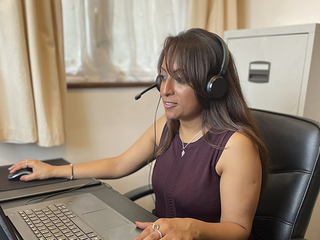Waldenström macroglobulinaemia (WM) symptoms and diagnosis
There's a range of possible symptoms with WM. Some are common and others vary from person to person, depending on how the disease develops.
Symptoms of WM
The most common symptoms of WM include:
- extreme tiredness (fatigue)
- long-lasting or frequent infections
If too many LPL cells have built up in your bone marrow, you may experience:
- anaemia (not enough red blood cells in the blood)
- breathlessness
- bruising or bleeding
- pancytopenia (a condition where you don’t have enough red blood cells, white blood cells or platelets)
If you have a lump in your lymph nodes, spleen or other organs, you may also experience swellings in your neck, armpits, groin or stomach area.
If you have too much IgM paraprotein in your blood, making it thick, you may also suffer from:
- headaches
- dizziness
- confusion
- nosebleeds
- blurred vision
- kidney problems.
Other symptoms
People with WM may also have certain symptoms known as B symptoms, which can include unexplained weight loss, heavy sweating and fever (high temperature).
Large amounts of IgM in the blood can cause damage to your nerves, known as neuropathy. This can lead to pain or numbness, often in the legs and feet.
Asymptomatic WM
Some people have no symptoms when they are diagnosed. This is known as asymptomatic or smouldering WM and doesn't usually need treatment straight away.
Tests for diagnosing WM
To find out if you have WM, you may need to have blood tests, urine tests, CT scans, a bone marrow biopsy, and cytogenetic testing of blood or bone marrow samples.
You’ll have a sample of your blood taken using a needle. This is used to:
- measure the amount of IgM in your blood
- count the number of normal blood cells (known as a full blood count)
- check that your liver and kidneys are working properly.
If your blood test results aren’t in the normal range, you may be asked to have a bone marrow biopsy. For this test, you’ll have a minor procedure where a small sample of bone marrow will be taken from part of your hip bone (your pelvis). This is sent to a laboratory to check for LPL cells. If these cells are found, it’s a strong sign you have WM.
You’ll be given a local anaesthetic to numb the area during the test, but it may feel a little uncomfortable. You can normally have this done as an outpatient, so you won’t have to stay in hospital overnight.
This test uses a series of X-rays from different angles to create a 3D image of your organs. This can be used to see if your lymph nodes are normal and to check your liver, kidneys and spleen for signs of WM.
In around nine out of ten cases of WM, there’s an error (known as a mutation) in a gene called MYD88. Genes are part of your DNA and are found in all the cells of your body. In a smaller number of people, a gene called CXCR4 is also affected.
Your doctors may test for mutations in your genes to help diagnose your condition. This is called cytogenetic testing and it can be done using a blood sample.

Worried about anything or have questions?
If you need someone to talk to, please don't hesitate to contact our Support Service by phone or email.
